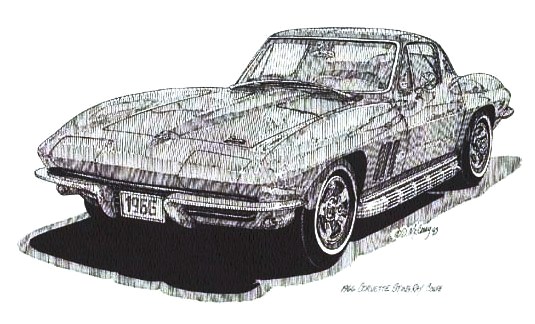|
Renamed from The Niquette Corvette as a deliberate effort in The Conquest of Ego Copyright ©2009 by Paul Niquette. All rights reserved. |
|||
Excuse me for reminiscing, but that
Stingray was the only vehicle with or without wings
about which I am willing to confess my unbounded
affection. During five years, nary a day passed
that I would not eagerly conjure up occasions to drive
it and to take the long way home. Oh right, and the
acquisition of this magnificent machine is a favorite
story. Though hardly romantic, that narration
gives the origin of its nickname, My Potato Car.
Now, it is well known that while cruising at highway speeds, an estimated 60% of a typical vehicle's power is devoted to overcoming aerodynamic drag, which increases steeply with vehicle velocity. The remaining 40% of that cruising power is dominated by rolling resistance and drive-train losses, which are constant forces but require linear increases of power with speed. Auxiliary engine loads are essentially constant: pumps that circulate lubrication and coolant, electrical alternator, power steering and brakes plus steady loads imposed by accessories -- indeed, as much as 5 hp can be taken up just by the typical air-conditioner. Given the information above and
assuming an ideal Specific
Horsepower of 2.0 lb/hr/hp, what is your
estimate of the Look-at-Me Car's
mileage at highway speed?
|

